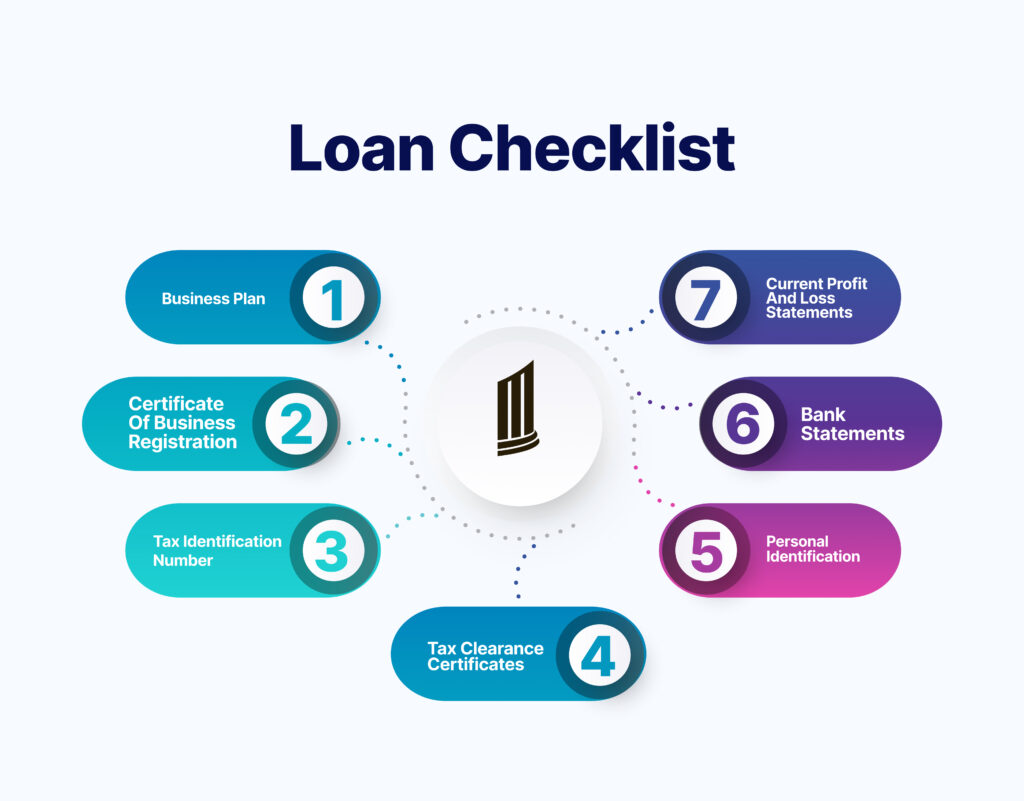Being an entrepreneur is no mean feat, the ability to scale up and thrive in the ever-evolving business environment is frequently constrained by challenges with getting funding. Small business owners usually face the daunting task of raising sufficient funds to expand operations, invest in technology, or gain entry into emerging markets. Accessing small business loans is crucial to providing entrepreneurs with the much needed resources they require to drive their business ventures to new heights. In this article, we will look at how entrepreneurs can strategically leverage small business loans to grow and thrive.
Beginning a business can be a challenging but equally rewarding experience. While having a business plan is important, it is not the only criteria for starting a business. Finance is an important element in business, as it is the lifeblood of the business. Small business loans can be used to cover initial startup costs such as procuring equipment, paying for an office or business space, inventory, and so on. When looking for a loan to kick start your business, keep in mind that there are different financing options available for small businesses.
Understanding Small Business Loans
A loan, by definition, is money borrowed that is expected to be paid back with interest. Businesses can borrow money to offset costs that they cannot ordinarily afford; this can be short term, medium term or long term. Loans can be given by governments as a way to support small and medium scale enterprises; it can also be given by commercial banks and other financial institutions. Understanding the different types of loans available, the interest charged, whether the interest is fixed or variable, etc. are all crucial aspects to note before accessing a loan for your business.
 Bank Loans
Bank Loans
Bank loans are typically given by the Bank of Industry or commercial banks. The Bank of Industry offers non-collateral loans that are designed to support the growth of small and medium scale enterprises. Commercial banks like Mintyn also offer low interest small business loans that you can leverage to scale up your business and thrive.
Grants
Grants are also a great way to finance your business. Federal, state, and local governments usually set up grants to support startups. Large corporations also give grants to small businesses through competitions. Grants are usually not repaid, and as a result, entrepreneurs sometimes go through a pitching process before they can qualify, and the competition is usually stiff.
The Bank of Industry provides funding for small businesses if they meet the required criteria.
Import/Export financing
Businesses that require raw materials or machinery from outside the country can access import financing or equipment financing loans. Businesses that manufacture products that meet the standard for export but lack the funds to push them through can apply for export financing loans.
Friends and family
Getting funds from family and friends is one of the easiest ways to finance your business. You can easily pitch your business idea at the dinner table or when you’re hanging out with friends. They may not charge interest on the loan since you are well known to them and they can vouch for your capabilities.
Crowdfunding
Crowdfunding is a lot like financing from friends and family, only that it includes asking total strangers to support and donate money for your business. There are crowdfunding platforms like GoFundMe where individuals can raise money for their businesses.
Eligibility Criteria and Process of Application

All the different types of loans mentioned above have their advantages and considerations, as well as the criteria required for you to access them. Entrepreneurs must understand the eligibility criteria established by lenders and the steps involved in the loan application process. Lenders want to know that a business is viable, stable, and will make profit. Some factors that lenders consider include:
Duration in business: lenders want to know how long you have been in business, your track record, how revenue is generated and managed, and if it’s a startup, they want to see a compelling business plan that is well detailed, clearly stating the short, medium and long term projections for revenue and profit.
Credit score: The credit score is used as a risk assessment tool to determine how risky it is to fund your business. You will need a good credit score to qualify.
Cash flow statements: this will typically show how money flows in and out of the business. This gives the lenders an idea of how much you make in a specific period and how giving you a loan can help you scale up the business.
Collateral: collateral is a major requirement for most loans, as it is what the lender will seize if you don’t meet up with the loan repayment. Items that can be used as collateral include real estate, machinery, automobiles, and jewellery. Most business owners resort to using their private assets as collaterals in order to be eligible for the loans
Working capital: this refers to the amount of money spent on the day to day running of your business. Working capital is determined by removing debt liabilities due within a period from current assets that can be converted to cash.
Loan Checklist

The following items are required by lenders before businesses can access loans. Note that the list is not exhaustive, as different financial institutions may have some differences in their requirements.
- Business plan
- Certificate of business registration
- Tax identification number
- Tax clearance certificates
- Personal identification
- Bank statements
- Current profit and loss statements
At Mintyn, being a fully digital bank, we have streamlined the process of loan application for you. As an entrepreneur, you can apply for a loan from the comfort of your home using a mobile phone; all you have to do is download the Mintyn App.
Before signing the dotted lines, here are a few things to consider:
- Interest rate: this is the amount charged on the loan, the entrepreneur will consider if the interest charged is variable or fixed, as well as the total interest that will accumulate over the lifespan of the loan.
- Terms of repayment: it is important to read through the fine print when applying for a business loan, understand the terms of repayment, when it is supposed to begin, and the frequency—is it monthly, quarterly, or yearly.
- Funding timeline: consider the duration of the application and approval process, how long it will be before you receive the funds, and whether it will be a one-off or in trenches.
- Additional charges: some financial institutions charge loan processing fees; read through the fine prints of the loan contract carefully for other additional charges that you may not be aware of.
Strategic Planning for Small Business Loans

- Evaluating business needs and opportunity: Before applying for a small business loan, entrepreneurs must conduct a thorough evaluation of their business needs and potential for growth. This entails identifying specific areas where additional funding can have a significant impact on business operations and increase efficiency. These business operations include increasing product lines, making an entry into new markets, promoting innovation, and upgrading technology infrastructure.
- Writing a comprehensive business plan: a detailed, well-thought out business plan is essential for the application for a small business loan to scale through. The business plan should contain an executive summary detailing the line of business and its founders. It must also contain results of market analysis showing that you have done your research and know who your target customers are. Another important aspect of the business plan is the projections, financial projections, growth projections, and profit projections. This will assure the lenders that your business is viable and that growth is inevitable. Furthermore, the business plan must contain a detailed risk assessment. Entrepreneurs must tailor their business plans to meet the lender’s expectations while also demonstrating the potential for growth. No institution wants to invest in a business that has zero potential for either growth or profit.
- Tailoring loans to align with business objectives: there are different types of loans available, and as a result, entrepreneurs must choose wisely the type that best aligns with the goals and objectives of the business. Whether the goal is to fund a short-term project, provide working capital, or fund a long-term expansion drive, business owners must select a loan type that meets their needs while also aligning with their goals.
- Comparing interest rates and terms: understanding the complexities of interest rates and how they apply to the different types of loans available is essential for entrepreneurs. Apart from the interest rates, they must also understand the repayment terms and other associated fees, such as late fees for defaulting when payment is due. Business owners should compare rates from different lenders and negotiate favourable terms that will be suitable to their business. And ascertain the total cost of borrowing
- Risk management
Like most things in life, there is a considerable level of risk associated with borrowing. Entrepreneurs should be aware of this fact and develop effective risk management strategies to mitigate these risks. Business owners can also carry out due diligence on their lenders in order to ensure that they are a reputable financial institution, duly registered, and licenced to give loans. Another way to reduce risk is by having multiple streams of income, diversifying, building robust customer service relationships, and setting money aside for emergency and contingencies - Improving creditworthiness
A good credit history makes it easier for an entrepreneur to obtain favourable loan terms. Business owners can improve their credit-worthiness by adhering to the loan repayment plan, paying debts on time, using credit responsibly, and addressing discrepancies in credit reports.
How to Leverage Small Business Loans for Growth
Invest in operations: one of the best ways to leverage small business loans and scale up is to invest strategically in operations. Either by expanding the product line, upgrading equipment, process optimisation or taking measures to improve service offerings, entrepreneurs can improve productivity and efficiency.
Invest in technology: it is said that innovation is the calling card of the future. Entrepreneurs can drive growth by investing in current technology to improve business efficiency and better business process management.
Expansion into new markets: small business loans provide entrepreneurs with the capital they need to make inroads into new markets that they previously could not penetrate. This will enable them to increase and diversify their customer base, open more branches, and be more accessible, which will ultimately drive growth.
Marketing and branding campaigns: entrepreneurs must spread their brand message as far and wide as possible. Strategic marketing and branding initiatives are critical for customer attraction and retention. Small business loans can be used to fund marketing campaigns, digital presence, and branding initiatives.
Overcoming Challenges with Small Business loans
The first step to overcoming common challenges with small business loans is recognising them and taking appropriate steps to mitigate them. Pitfalls such as overleveraging, cash flow mismanagement, lack of proper risk assessment, and economic downturn are all challenges that can be faced with small business loans.
Overleveraging: this happens when a business incurs more debt in relation to its income. If left unchecked, it can easily spiral out of control and even cause the business to go bankrupt. Businesses can avoid overleveraging by having a budget that is realistic, prioritising essential expenses, and reducing non-essential spending.
Cash flow mismanagement: this should be avoided, funds must be used for the purpose it which they have been budgeted, avoid unnecessary spending; and eliminate waste as much as possible
Mismanaging risk: risk assessment and management are crucial for any business to thrive. Businesses mismanage risk by making unrealistic projections, lack of planning, relying on outdated data, and using business models that do not align with current realities. Risks can be better managed with effective communication between all stakeholders of the business, using current data and metrics, and strategic planning.
The Role of Professional Advisors
When navigating the complexities of small business loans, entrepreneurs can gain a better understanding if they employ the services of experts. They can benefit by seeking advice from financial advisors, accountants, and legal practitioners not just during the loan application process but periodically as long as the business is in existence. Business owners should form trusted financial advisory teams to leverage and make sound decisions.
Finally, small business loans are valuable tools for entrepreneurs looking to scale and thrive. Entrepreneurs can unlock the financial resources needed to propel their ventures to new heights by understanding the complexities involved in accessing small business loans, strategically planning for growth, and making informed decisions. This serves as a comprehensive road map for entrepreneurs seeking to leverage small business loans for long-term and profitable growth.

Leave a Reply